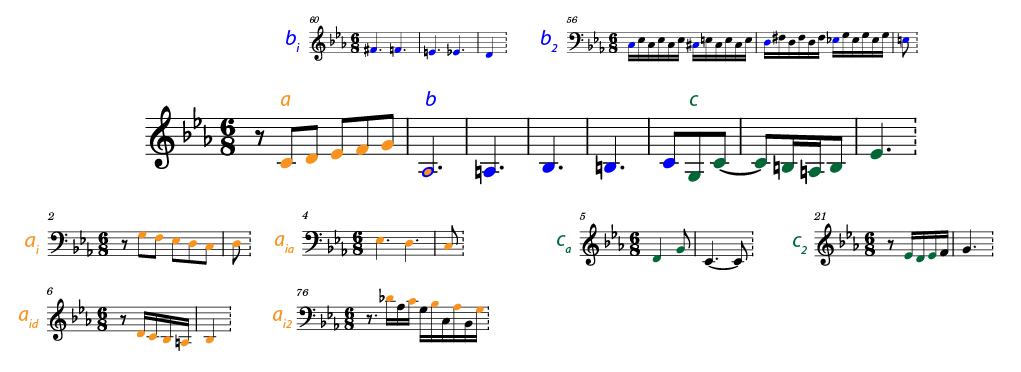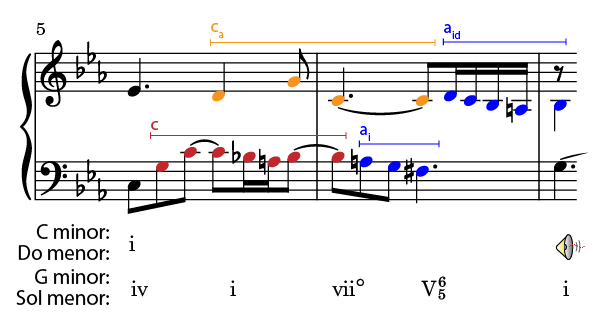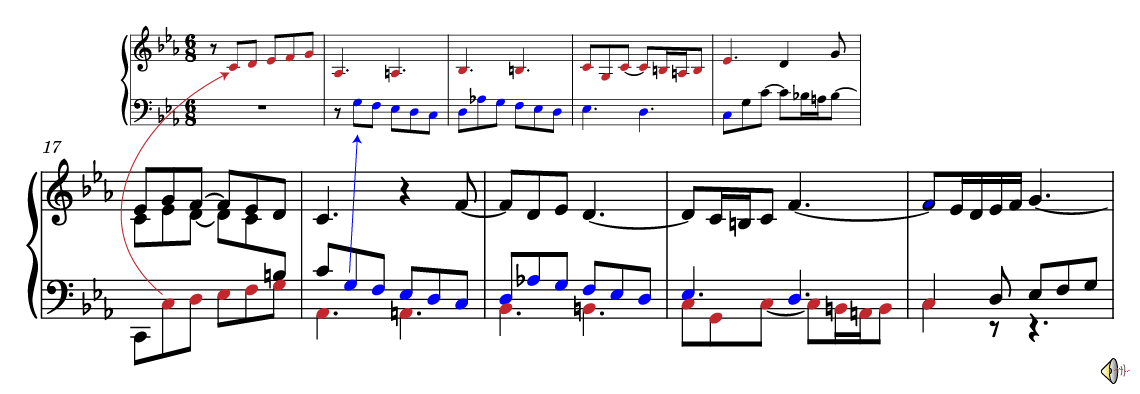J. S. Bach - Partita in C minor BWV 997
José Rodríguez Alvira
Fugue
The fugue from Partita BWV 997 is in ternary form (A-B-A). Section A is the fugue itself, while section B develops the thematic material of the fugue in free form. It is a double fugue because it begins with a double subject. Click on the sections to see a detailed analysis.

Subject
The double subject presents several motifs that will develop throughout the fugue.
- The two voices of the double subject appear in red (upper) and blue (lower).
- The lower voice of the subject is derived from the motives of the upper voice.
- Bar 1: motif a.
- Bars 2 to 4: motif b in the upper voice, motif ai (a transformed by inversion) in the lower voice.
- Bars 4 to 5: the subject concludes with the motif c in the upper voice and the motif aia (first notes of ai transformed by augmentation) in the lower voice.

This image illustrates the motifs and variations that will appear throughout the fugue (the number indicates the measure):


This work is licensed under a Creative Commons Attribution-NonCommercial-NoDerivatives 4.0 International License. José Rodríguez Alvira.
Published by teoria.com














